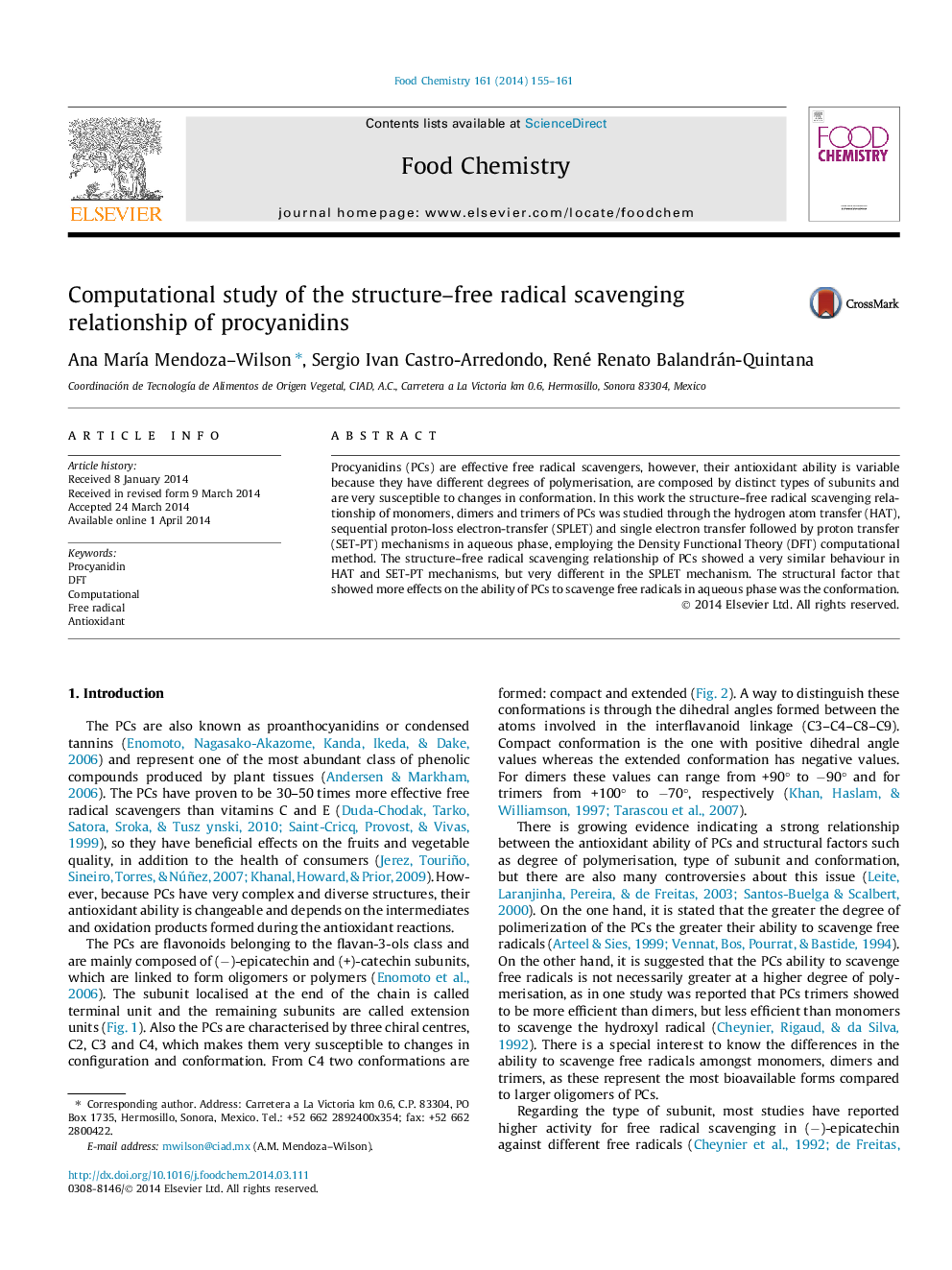| Article ID | Journal | Published Year | Pages | File Type |
|---|---|---|---|---|
| 7596945 | Food Chemistry | 2014 | 7 Pages |
Abstract
Procyanidins (PCs) are effective free radical scavengers, however, their antioxidant ability is variable because they have different degrees of polymerisation, are composed by distinct types of subunits and are very susceptible to changes in conformation. In this work the structure-free radical scavenging relationship of monomers, dimers and trimers of PCs was studied through the hydrogen atom transfer (HAT), sequential proton-loss electron-transfer (SPLET) and single electron transfer followed by proton transfer (SET-PT) mechanisms in aqueous phase, employing the Density Functional Theory (DFT) computational method. The structure-free radical scavenging relationship of PCs showed a very similar behaviour in HAT and SET-PT mechanisms, but very different in the SPLET mechanism. The structural factor that showed more effects on the ability of PCs to scavenge free radicals in aqueous phase was the conformation.
Related Topics
Physical Sciences and Engineering
Chemistry
Analytical Chemistry
Authors
Ana MarÃa Mendoza-Wilson, Sergio Ivan Castro-Arredondo, René Renato Balandrán-Quintana,
